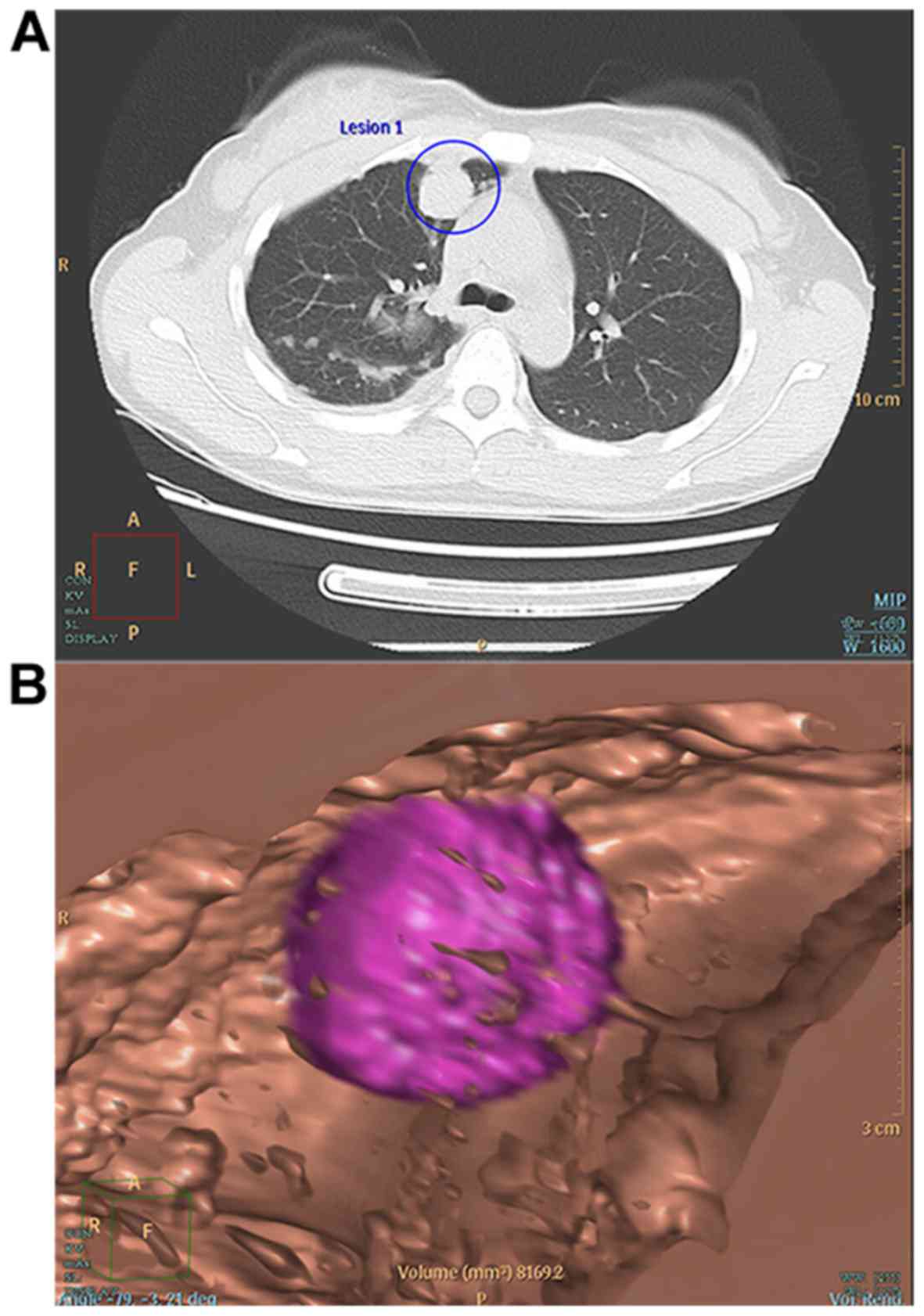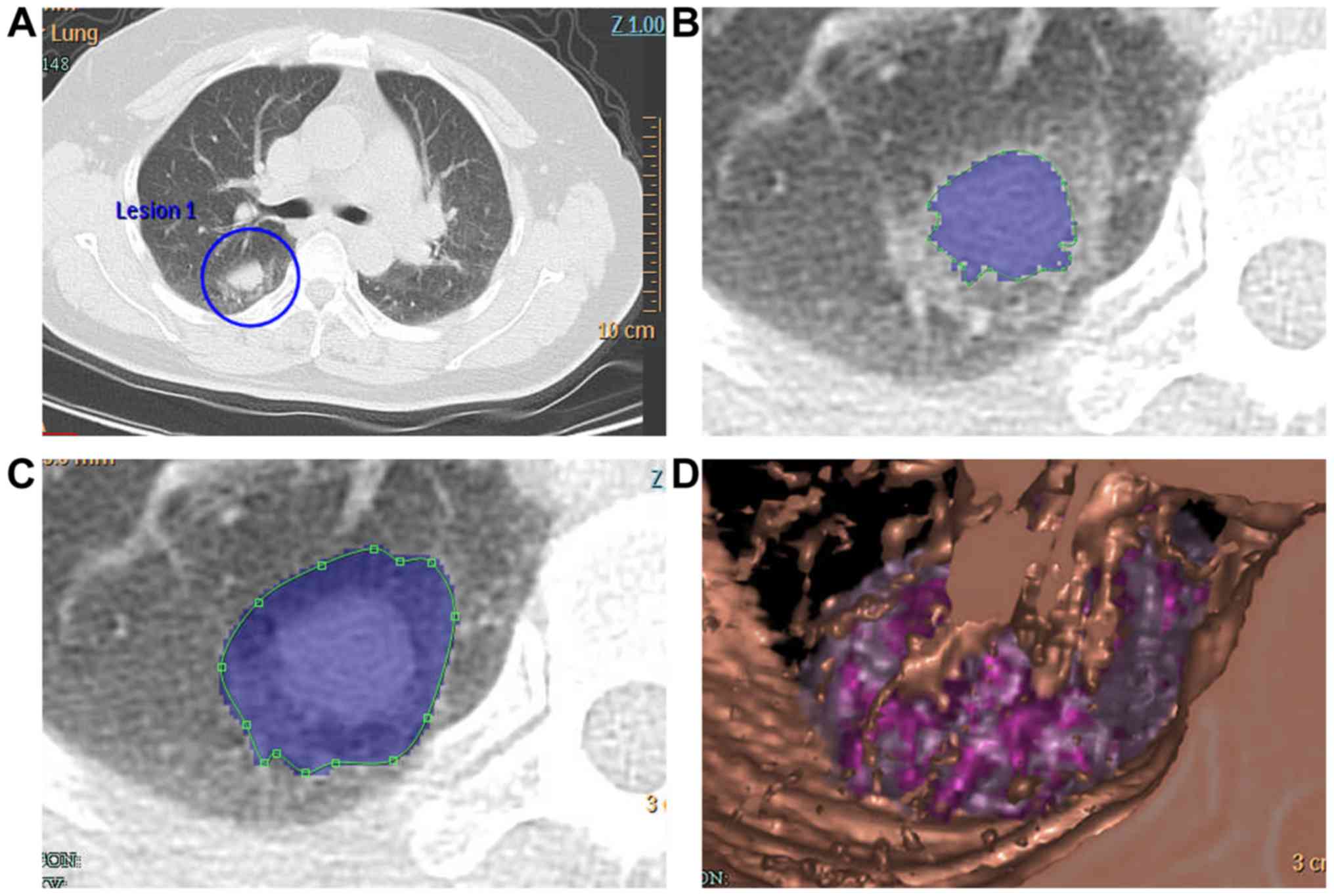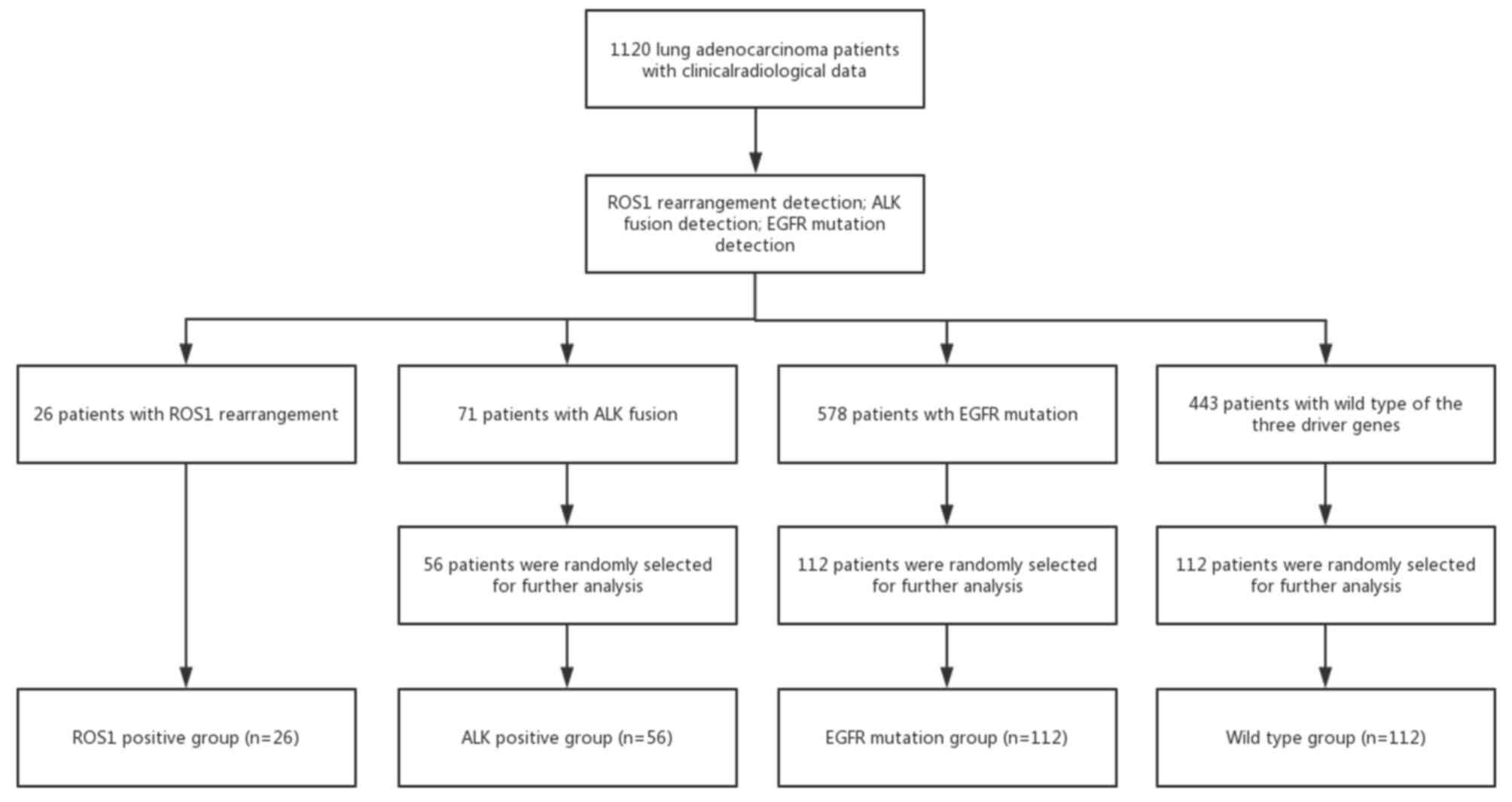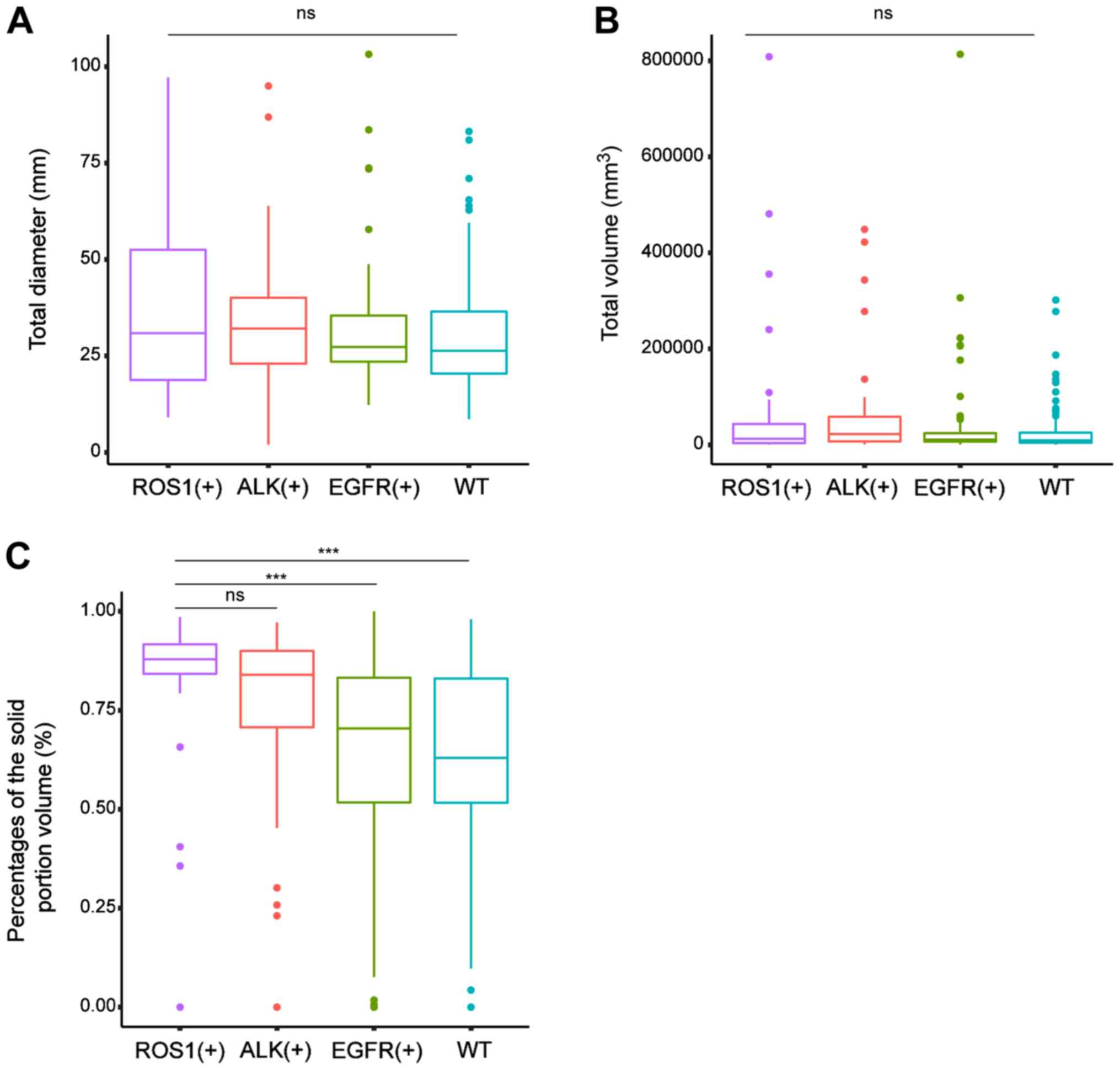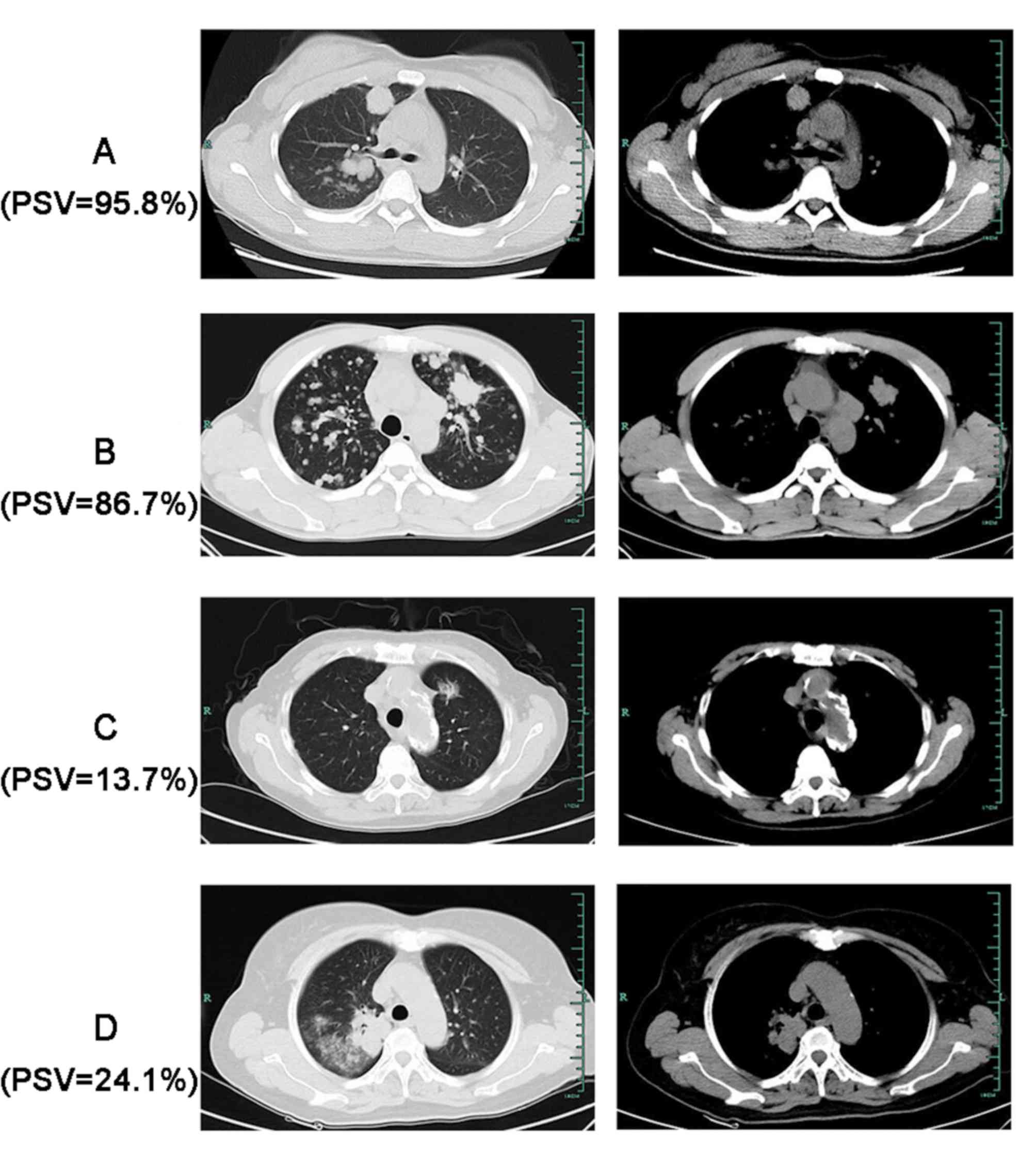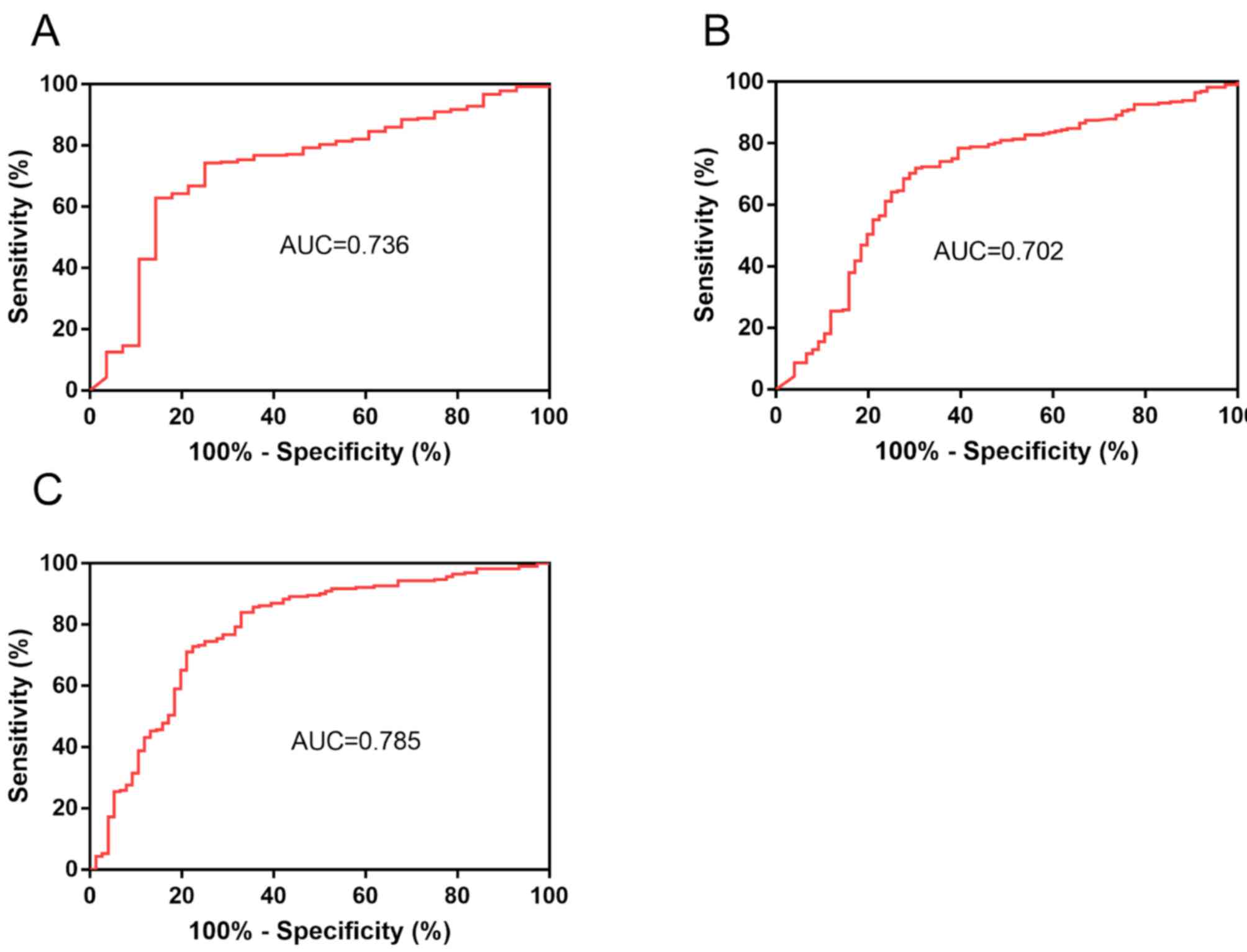|
1
|
Lynch TJ, Bell DW, Sordella R,
Gurubhagavatula S, Okimoto RA, Brannigan BW, Harris PL, Haserlat
SM, Supko JG, Haluska FG, et al: Activating mutations in the
epidermal growth factor receptor underlying responsiveness of
non-small-cell lung cancer to gefitinib. N Engl J Med.
350:2129–2139. 2004. View Article : Google Scholar : PubMed/NCBI
|
|
2
|
Paez JG, Janne PA, Lee JC, Tracy S,
Greulich H, Gabriel S, Herman P, Kaye FJ, Lindeman N, Boggon TJ, et
al: EGFR mutations in lung cancer: Correlation with clinical
response to gefitinib therapy. Science. 304:1497–1500. 2004.
View Article : Google Scholar : PubMed/NCBI
|
|
3
|
Soda M, Choi YL, Enomoto M, Takada S,
Yamashita Y, Ishikawa S, Fujiwara S, Watanabe H, Kurashina K,
Hatanaka H, et al: Identification of the transforming EML4-ALK
fusion gene in non-small-cell lung cancer. Nature. 448:561–566.
2007. View Article : Google Scholar : PubMed/NCBI
|
|
4
|
Rikova K, Guo A, Zeng Q, Possemato A, Yu
J, Haack H, Nardone J, Lee K, Reeves C, Li Y, et al: Global survey
of phosphotyrosine signaling identifies oncogenic kinases in lung
cancer. Cell. 131:1190–1203. 2007. View Article : Google Scholar : PubMed/NCBI
|
|
5
|
Rodig SJ and Shapiro GI: Crizotinib, a
small-molecule dual inhibitor of the c-Met and ALK receptor
tyrosine kinases. Curr Opin Investig Drugs. 11:1477–1490.
2010.PubMed/NCBI
|
|
6
|
Cui JJ, Tran-Dube M, Shen H, Nambu M, Kung
PP, Pairish M, Jia L, Meng J, Funk L, Botrous I, et al: Structure
based drug design of crizotinib (PF-02341066), a potent and
selective dual inhibitor of mesenchymal-epithelial transition
factor (c-MET) kinase and anaplastic lymphoma kinase (ALK). J Med
Chem. 54:6342–6363. 2011. View Article : Google Scholar : PubMed/NCBI
|
|
7
|
Shaw AT, Kim DW, Nakagawa K, Seto T, Crinó
L, Ahn MJ, De Pas T, Besse B, Solomon BJ, Blackhall F, et al:
Crizotinib versus chemotherapy in advanced ALK-positive lung
cancer. N Engl J Med. 368:2385–2394. 2013. View Article : Google Scholar : PubMed/NCBI
|
|
8
|
Shaw AT, Riely GJ, Bang YJ, Kim DW,
Camidge DR, Solomon BJ, Varella-Garcia M, Iafrate AJ, Shapiro GI,
Usari T, et al: Crizotinib in ROS1-rearranged advanced
non-small-cell lung cancer (NSCLC): Updated results, including
overall survival, from PROFILE 1001. Ann Oncol. 30:1121–1126. 2019.
View Article : Google Scholar : PubMed/NCBI
|
|
9
|
Inamura K, Takeuchi K, Togashi Y, Nomura
K, Ninomiya H, Okui M, Satoh Y, Okumura S, Nakagawa K, Soda M, et
al: EML4-ALK fusion is linked to histological characteristics in a
subset of lung cancers. J Thorac Oncol. 3:13–17. 2008. View Article : Google Scholar : PubMed/NCBI
|
|
10
|
Wong DW, Leung EL, So KK, Tam IY, Sihoe
AD, Cheng LC, Ho KK, Au JS, Chung LP, Pik Wong M, et al: The
EML4-ALK fusion gene is involved in various histologic types of
lung cancers from nonsmokers with wild-type EGFR and KRAS. Cancer.
115:1723–1733. 2009. View Article : Google Scholar : PubMed/NCBI
|
|
11
|
Takahashi T, Sonobe M, Kobayashi M,
Yoshizawa A, Menju T, Nakayama E, Mino N, Iwakiri S, Sato K,
Miyahara R, et al: Clinicopathologic features of non-small-cell
lung cancer with EML4-ALK fusion gene. Ann Surg Oncol. 17:889–897.
2010. View Article : Google Scholar : PubMed/NCBI
|
|
12
|
Fukui T, Yatabe Y, Kobayashi Y, Tomizawa
K, Ito S, Hatooka S, Matsuo K and Mitsudomi T: Clinicoradiologic
characteristics of patients with lung adenocarcinoma harboring
EML4-ALK fusion oncogene. Lung Cancer. 77:319–325. 2012. View Article : Google Scholar : PubMed/NCBI
|
|
13
|
Zhou JY, Zheng J, Yu ZF, Xiao WB, Zhao J,
Sun K, Wang B, Chen X, Jiang LN, Ding W and Zhou JY: Comparative
analysis of clinicoradiologic characteristics of lung
adenocarcinomas with ALK rearrangements or EGFR mutations. Eur
Radiol. 25:1257–1266. 2015. View Article : Google Scholar : PubMed/NCBI
|
|
14
|
Choi H, Paeng JC, Kim DW, Lee JK, Park CM,
Kang KW, Chung JK and Lee DS: Metabolic and metastatic
characteristics of ALK-rearranged lung adenocarcinoma on FDG
PET/CT. Lung Cancer. 79:242–247. 2013. View Article : Google Scholar : PubMed/NCBI
|
|
15
|
Go H, Kim DW, Kim D, Keam B, Kim TM, Lee
SH, Heo DS, Bang YJ and Chung DH: Clinicopathologic analysis of
ROS1-rearranged non-small-cell lung cancer and proposal of a
diagnostic algorithm. J Thorac Oncol. 8:1445–1450. 2013. View Article : Google Scholar : PubMed/NCBI
|
|
16
|
Warth A, Muley T, Dienemann H, Goeppert B,
Stenzinger A, Schnabel PA, Schirmacher P, Penzel R and Weichert W:
ROS1 expression and translocations in non-small-cell lung cancer:
Clinicopathological analysis of 1478 cases. Histopathology.
65:187–194. 2014. View Article : Google Scholar : PubMed/NCBI
|
|
17
|
Digumarthy SR, Mendoza DP, Lin JJ, Chen T,
Rooney MM, Chin E, Sequist LV, Lennerz JK, Gainor JF and Shaw AT:
Computed tomography imaging features and distribution of metastases
in ROS1-rearranged non-small-cell lung cancer. Clin Lung Cancer.
21:153–159.e3. 2020. View Article : Google Scholar : PubMed/NCBI
|
|
18
|
Detterbeck FC, Boffa DJ and Tanoue LT: The
new lung cancer staging system. Chest. 136:260–271. 2009.
View Article : Google Scholar : PubMed/NCBI
|
|
19
|
Shan L, Lian F, Guo L, Qiu T, Ling Y, Ying
J and Lin D: Detection of ROS1 gene rearrangement in lung
adenocarcinoma: Comparison of IHC, FISH and real-time RT-PCR. PLoS
One. 10:e01204222015. View Article : Google Scholar : PubMed/NCBI
|
|
20
|
Lee HJ, Kim YT, Kang CH, Zhao B, Tan Y,
Schwartz LH, Persigehl T, Jeon YK and Chung DH: Epidermal growth
factor receptor mutation in lung adenocarcinomas: Relationship with
CT characteristics and histologic subtypes. Radiology. 268:254–264.
2013. View Article : Google Scholar : PubMed/NCBI
|
|
21
|
Hansell DM, Bankier AA, MacMahon H, McLoud
TC, Muller NL and Remy J: Fleischner Society: Glossary of terms for
thoracic imaging. Radiology. 246:697–722. 2008. View Article : Google Scholar : PubMed/NCBI
|
|
22
|
Ikehara M, Saito H, Kondo T, Murakami S,
Ito H, Tsuboi M, Oshita F, Noda K, Nakayama H, Yokose T, et al:
Comparison of thin-section CT and pathological findings in small
solid-density type pulmonary adenocarcinoma: Prognostic factors
from CT findings. Eur J Radiol. 81:189–194. 2012. View Article : Google Scholar : PubMed/NCBI
|
|
23
|
Quaia E, Baratella E, Pizzolato R, Bussani
R and Cova MA: Radiological-pathological correlation in
intratumoural tissue components of solid lung tumours. Radiol Med.
114:173–189. 2009.(In Italian). View Article : Google Scholar : PubMed/NCBI
|
|
24
|
Yoshida A, Kohno T, Tsuta K, Wakai S, Arai
Y, Shimada Y, Asamura H, Furuta K, Shibata T and Tsuda H:
ROS1-rearranged lung cancer: A clinicopathologic and molecular
study of 15 surgical cases. Am J Surg Pathol. 37:554–562. 2013.
View Article : Google Scholar : PubMed/NCBI
|
|
25
|
Bergethon K, Shaw AT, Ou SH, Katayama R,
Lovly CM, McDonald NT, Massion PP, Siwak-Tapp C, Gonzalez A, Fang
R, et al: ROS1 rearrangements define a unique molecular class of
lung cancers. J Clin Oncol. 30:863–870. 2012. View Article : Google Scholar : PubMed/NCBI
|
|
26
|
Chen YF, Hsieh MS, Wu SG, Chang YL, Shih
JY, Liu YN, Tsai MF, Tsai TH, Yu CJ, Yang JC and Yang PC: Clinical
and the prognostic characteristics of lung adenocarcinoma patients
with ROS1 fusion in comparison with other driver mutations in East
Asian populations. J Thorac Oncol. 9:1171–1179. 2014. View Article : Google Scholar : PubMed/NCBI
|
|
27
|
Zhu Q, Zhan P, Zhang X, Lv T and Song Y:
Clinicopathologic characteristics of patients with ROS1 fusion gene
in non-small cell lung cancer: A meta-analysis. Transl Lung Cancer
Res. 4:300–309. 2015.PubMed/NCBI
|
|
28
|
Zhu YC, Zhang XG, Lin XP, Wang WX, Li XF,
Wu LX, Chen HF, Xu CW and Du KQ: Clinicopathological features and
clinical efficacy of crizotinib in Chinese patients with
ROS1-positive non-small cell lung cancer. Oncol Lett. 17:3466–3474.
2019.PubMed/NCBI
|
|
29
|
Cai W, Li X, Su C, Fan L, Zheng L, Fei K,
Zhou C, Manegold C and Schmid-Bindert G: ROS1 fusions in Chinese
patients with non-small-cell lung cancer. Ann Oncol. 24:1822–1827.
2013. View Article : Google Scholar : PubMed/NCBI
|
|
30
|
Shimizu K, Yamada K, Saito H, Noda K,
Nakayama H, Kameda Y and Nakata K: Surgically curable peripheral
lung carcinoma: Correlation of thin-section CT findings with
histologic prognostic factors and survival. Chest. 127:871–878.
2005. View Article : Google Scholar : PubMed/NCBI
|
|
31
|
Okada M, Nishio W, Sakamoto T, Uchino K
and Tsubota N: Discrepancy of computed tomographic image between
lung and mediastinal windows as a prognostic implication in small
lung adenocarcinoma. Ann Thorac Surg. 76:1828–1832. 2003.
View Article : Google Scholar : PubMed/NCBI
|
|
32
|
Takamochi K, Nagai K, Yoshida J, Suzuki K,
Ohde Y, Nishimura M, Sasaki S and Nishiwaki Y: Pathologic N0 status
in pulmonary adenocarcinoma is predictable by combining serum
carcinoembryonic antigen level and computed tomographic findings. J
Thorac Cardiovasc Surg. 122:325–330. 2001. View Article : Google Scholar : PubMed/NCBI
|
|
33
|
Yoshida A, Tsuta K, Nakamura H, Kohno T,
Takahashi F, Asamura H, Sekine I, Fukayama M, Shibata T, Furuta K
and Tsuda H: Comprehensive histologic analysis of ALK-rearranged
lung carcinomas. Am J Surg Pathol. 35:1226–1234. 2011. View Article : Google Scholar : PubMed/NCBI
|
|
34
|
Rodig SJ, Mino-Kenudson M, Dacic S, Yeap
BY, Shaw A, Barletta JA, Stubbs H, Law K, Lindeman N, Mark E, et
al: Unique clinicopathologic features characterize ALK-rearranged
lung adenocarcinoma in the western population. Clin Cancer Res.
15:5216–5223. 2009. View Article : Google Scholar : PubMed/NCBI
|















